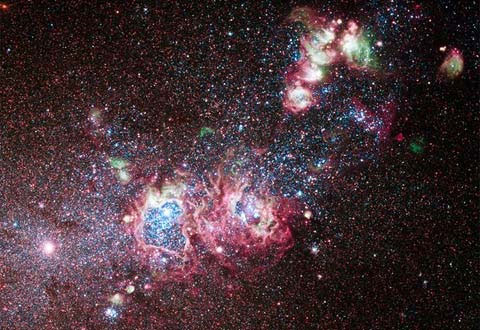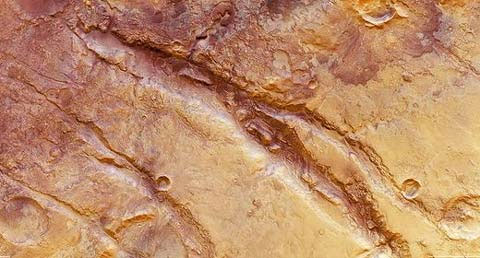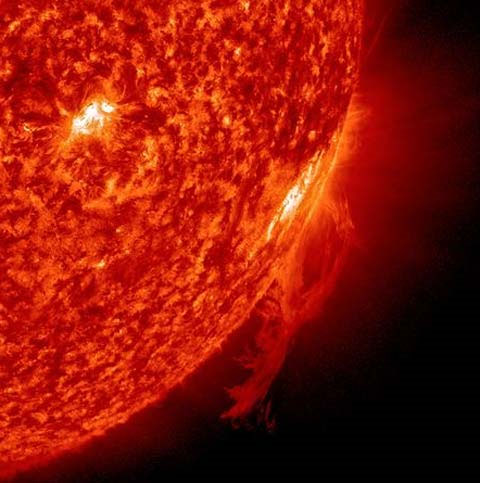Close up of the 'breeding' star
The dazzling beauty of NGC 4214 dwarf galaxy is disturbed by star formation, the winding "sun snake", . among the most beautiful cosmic photos of the week voted by National Geographic magazine .
NGC 4214 dwarf galaxy is brilliantly colored in a composite picture taken by NASA's Hubble Telescope and recently published. The galaxy is about 10 million years from Earth, this light is disturbed by star formation. However, astronomers have also observed that older star clusters are scattered around this "star-like" galaxy. That indicates that the current replication cycle is not the first time that occurs in this area of the universe. In addition, the galaxy's abundant hydrogen gas - the main constituent of stars - shows that star production here is likely to continue for a long time in the future.

A photo provided by the European Space Agency 's Mars Express probe (ESA) reveals deep cracks across the surface of Mars. This photo captures part of the Nili Fossae area, where the gutters and curved faults of the northwest of the ancient Isidis collision basin are gathered. The curves tend to follow the shape of the basin, indicating that the faults seem to be formed as a result of the collision.

NASA's Solar Dynamics Observatory (SDO) recently looked at an active area of the sun and captured the image of a "sun snake" (actually a plasma band - carrier gas charges) are curving along the magnetic fields for more than 2 days.

Molecular winds originate from a galaxy. With a powerful infrared vision, ESA's Herschel space telescope has detected intense molecular gases escaping from galaxies at the fastest possible speed of 1,000 km / s. Scientists once suspected the existence of such winds but the data obtained by Herschel telescope for the first time confirmed that. It is thought that these winds are draining the raw fuel source for star formation of galaxies, although exactly what controls the winds is still a mystery.

The rust-colored sediment spills into the turquoise waters of Ayakum Lake on the Tibetan plateau. When these sediments accumulate so that a river cannot flow through them anymore, the river will move to a new channel. Over time, these channels tend to sweep back and forth to form the characteristic fan shape of river deltas.

NASA's Landsat-7 satellite on May 8 captured a billowing smoke scene from the fire of the Honey steppe zone in the Okefenokee swamp area, southern Georgia, USA. Originating from lightning, the fire until now has devastated about 25,018 hectares of shrubs and bushes. However, the local authorities are not too worried: fires are a natural part of the swamp ecosystem, freeing the land for the proliferation of fresh pastures. Firefighters are still working hard to keep the fire from spreading and hopefully the heavy summer rains will eventually extinguish the fire.

- Close up of the star is said to have aliens living
- Close up of dead star
- Pole Star
- Why does the star system have 3 super new Earth?
- Detecting unprecedented neutron stars, challenging the physical limit
- Close up of a star's death
- Huge 'vampire' in the universe
- Successful breeding of wheat tolerates salinity
- New findings help prove the theory of black holes
- The scientists were skeptical of discovering Star Death
- An old star near the universe
- For the first time, a star has been discovered in a star
 The 11 most unique public toilets in the world
The 11 most unique public toilets in the world Explore the ghost town in Namibia
Explore the ghost town in Namibia Rare historical moments are 'colored', giving us a clearer view of the past
Rare historical moments are 'colored', giving us a clearer view of the past The world famous ghost ship
The world famous ghost ship